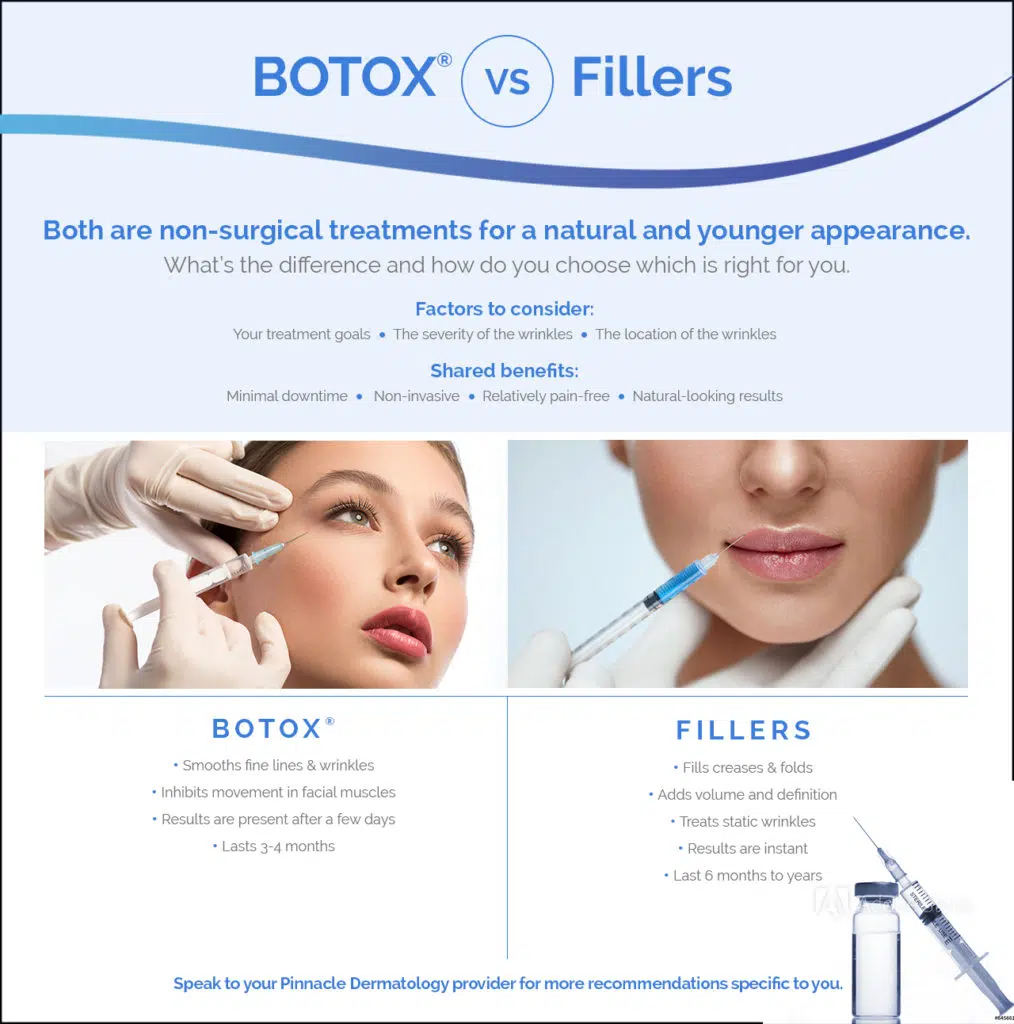BOTOX or Fillers: How to Choose?
Decoding the Fountain of Youth: The Differences between BOTOX® and Fillers
 In the quest for eternal youth, many individuals turn to non-invasive cosmetic procedures like BOTOX® and dermal fillers. Both promise to turn back the hands of time, but understanding the key differences between the two can help you make an informed decision on which treatment is right for you.
In the quest for eternal youth, many individuals turn to non-invasive cosmetic procedures like BOTOX® and dermal fillers. Both promise to turn back the hands of time, but understanding the key differences between the two can help you make an informed decision on which treatment is right for you.BOTOX and fillers serve distinct purposes in the world of aesthetic enhancements. BOTOX, short for botulinum toxin, is a neurotoxin that temporarily paralyzes muscles, reducing the appearance of wrinkles and fine lines. It's an excellent choice for treating dynamic wrinkles, which are caused by repetitive facial movements such as smiling or frowning.
Common areas for BOTOX injections include the forehead, crow's feet, and frown lines.
On the other hand, dermal fillers, as the name suggests, are designed to add volume beneath the skin's surface. They are particularly effective in treating static wrinkles, which are visible even when the face is at rest.
Fillers can also be used to enhance facial contours, plump lips, and reduce the appearance of scars or hollow areas. Popular filler materials include hyaluronic acid, collagen, and poly-L-lactic acid.
BOTOX® or Fillers: Non-Surgical Treatments for a Natural, Younger Appearance
When it comes to BOTOX® or fillers, our dermatologists can help you understand the differences between these popular treatments and how to choose which cosmetic dermatology services are right for you.
How to Decide:
The decision between BOTOX and fillers often comes down to the specific concerns you want to address. If your primary goal is to smooth out wrinkles caused by facial expressions, BOTOX might be the more suitable option. However, if volume loss, sagging skin, or enhancing specific facial features is your concern, fillers may be the preferred choice.
Key Considerations for BOTOX
Another key consideration is the duration of results. Botox typically lasts three to six months, requiring periodic touch-ups to maintain its effects. In contrast, fillers can last anywhere from six months to two years, depending on the type of filler used and the treated area.
Consult with an Expert: BOTOX
It's crucial to consult with a qualified and experienced practitioner who can assess your individual needs and recommend the most appropriate treatment plan. Factors such as skin type, age, and desired results play a significant role in determining the best approach. We offer a variety of injectable treatments, and our team of experts can help you achieve natural-looking results that enhance your appearance and boost your confidence.

BOTOX® or Fillers: The Choice is Yours!
Ultimately, the choice between BOTOX® or fillers depends on your unique aesthetic goals. A personalized consultation with a skilled practitioner can help you navigate the options and achieve the rejuvenated look you desire. Remember, the fountain of youth may not be found in a single treatment, but with the right combination, you can unveil a refreshed and natural appearance.

